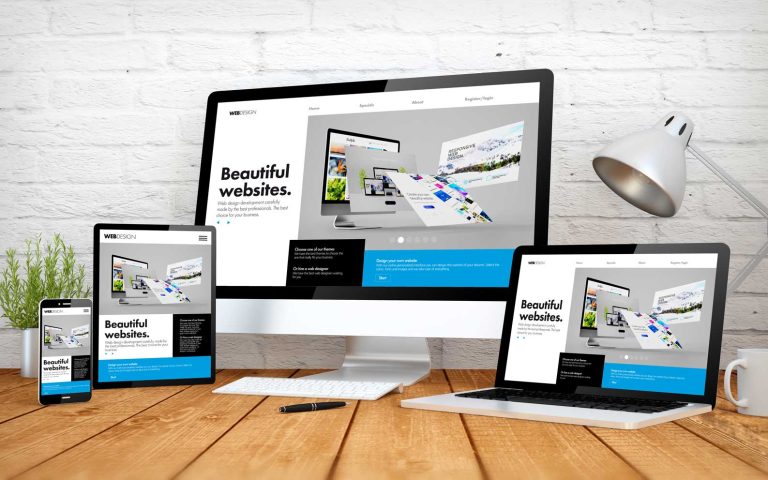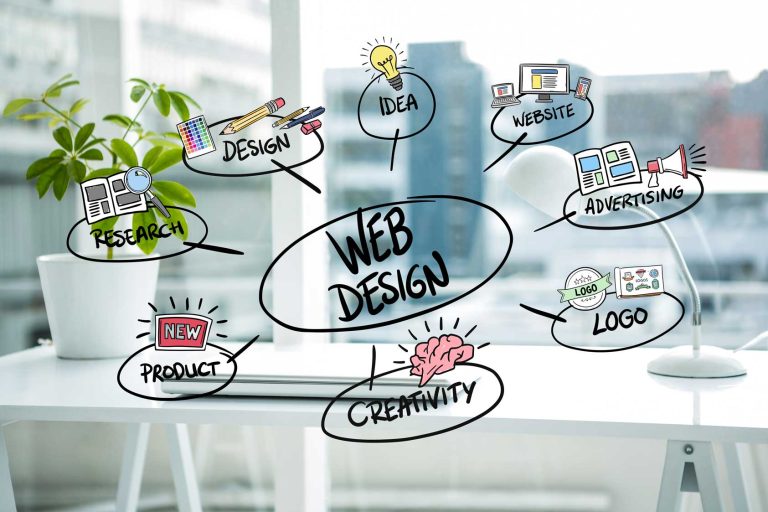Stunning graphics can make a website stand out from the crowd and draw attention to its content. However, integrating these graphics into website design is no easy feat. It requires careful consideration of the website’s overall design and purpose to ensure that the graphics enhance, rather than detract, from the user experience. In this blog post, we explore the power of visual storytelling in website design and discuss ways to incorporate stunning graphics into a website to create an engaging and memorable user experience.
The Importance of Visual Storytelling in Web Design
Visual storytelling plays a crucial role in web design, as it has the power to captivate users and create a memorable experience. It goes beyond just using aesthetically pleasing graphics; it involves using images, illustrations, and videos to convey a narrative and evoke emotions. When done right, visual storytelling can enhance the user’s understanding of the website’s content and purpose. It helps in communicating complex ideas or concepts in a more accessible and engaging manner. By using visual elements, designers can make information more digestible and interactive, resulting in increased user engagement and retention.
Additionally, visual storytelling in web design can help to establish a brand identity and create a strong connection with the target audience. It allows for the expression of a brand’s values, personality, and mission through visual elements, ultimately building trust and loyalty. In a world where attention spans are becoming shorter, visual storytelling is a powerful tool to capture and hold the user’s attention. It brings life to a website, making it more dynamic and memorable. By incorporating visual storytelling into website design, designers can create a more immersive and impactful user experience that leaves a lasting impression.
Choosing the Right Graphics for Your Website
Choosing the right graphics for your website is a crucial step in creating a visually appealing and engaging user experience. The graphics you choose should align with your website design and complement the overall visual storytelling approach you have taken. Here are some key considerations to keep in mind when selecting graphics for your website design.
Firstly, think about the purpose and message of your website. Are you aiming to convey a professional and corporate feel, or do you want to create a fun and vibrant atmosphere? The graphics you choose should reflect this intention and help to convey the desired mood.
Secondly, consider the target audience of your website. Who are they, and what type of visuals would resonate with them? Understanding your audience’s preferences and interests will help you choose graphics that appeal to them and enhance their overall experience.
Thirdly, pay attention to the quality of the graphics. High-resolution images and illustrations will ensure that your website looks professional and visually stunning. Blurry or pixelated graphics can create a negative impression and distract from your content.
Finally, consider the scalability and responsiveness of your chosen graphics. They should adapt well to different screen sizes and devices, ensuring a seamless user experience across various platforms. By carefully considering these factors and selecting graphics that align with your website design and visual storytelling approach, you can create a captivating and memorable user experience.
Tips for Creating Stunning Graphics
Creating stunning graphics is essential in capturing the attention and interest of users visiting your website. To achieve this, consider the following tips:
1. Understand your brand and audience:
Before creating graphics, have a clear understanding of your brand’s personality and values, as well as the preferences and interests of your target audience. This will help you choose visuals that align with your brand and resonate with your audience.
2. Use visual storytelling techniques:
Incorporate visual storytelling principles in your graphics to evoke emotions and convey a narrative. Utilize images, illustrations, and videos that enhance your website’s content and engage users in a meaningful way.
3. Maintain simplicity:
Avoid overcrowding your graphics with excessive elements. Opt for clean and minimalistic designs that effectively convey your message. Focus on using impactful visuals that highlight key information.
4. Ensure consistency:
Maintain consistency in your graphics by using a consistent color palette, typography, and design elements throughout your website. This creates a cohesive visual experience and reinforces your brand identity.
5. Pay attention to quality:
Use high-resolution graphics that appear crisp and clear on different screen sizes. Blurry or pixelated graphics can detract from the overall user experience and give an unprofessional impression. By implementing these tips, you can create stunning graphics that enhance your website design and captivate your audience, ultimately leading to a more engaging user experience.
Integrating Graphics into Website Design
When it comes to integrating graphics into website design, it’s essential to ensure that they seamlessly blend with the overall aesthetic and storytelling approach of the site. Graphics should not feel like an afterthought or an add-on, but rather an integral part of the website’s design and user experience. One key consideration when integrating graphics is to strategically place them in areas where they can enhance the storytelling process.
This could be through the use of illustrations that convey key messages or videos that provide additional context and depth to the content. Another important aspect is to ensure that the graphics are visually appealing and engaging. They should be in line with the overall design of the website and complement the color scheme, typography, and overall visual identity.
Additionally, it’s crucial to optimize the graphics for different devices and screen sizes. Responsive design is key to ensuring that the graphics adapt seamlessly to different devices, providing users with a consistent and enjoyable experience. By thoughtfully integrating graphics into website design, designers can elevate the storytelling experience and create a visually captivating and immersive journey for users.
Examples of Websites with Effective Graphic Design
Website design and visual storytelling go hand in hand when it comes to creating a captivating user experience. Here are some examples of websites that effectively incorporate stunning graphics into their design, using visual storytelling techniques to engage their audience.
1. Apple:
Known for its sleek and minimalist design, Apple’s website showcases high-resolution product images that create a sense of elegance and sophistication. The graphics are seamlessly integrated into the overall design, enhancing the user’s understanding of their products.
2. Airbnb:
Airbnb’s website utilizes stunning photography to tell stories about travel and exploration. The visuals transport users to different destinations, evoking a sense of wanderlust and adventure. The graphics play a vital role in creating an emotional connection with users and encouraging them to book accommodations.
3. National Geographic:
As a renowned storyteller, National Geographic’s website showcases captivating visuals that convey narratives about wildlife, culture, and exploration. The graphics are powerful and immersive, bringing the stories to life and captivating users with stunning imagery.
These examples demonstrate the power of visual storytelling in website design. By integrating stunning graphics that align with their brand and purpose, these websites create memorable and engaging user experiences that leave a lasting impression.
Benefits of Using Visual Storytelling in Web Design
In today’s digital landscape, where users are bombarded with information and attention spans are diminishing, visual storytelling in website design has become more important than ever. The benefits of incorporating stunning graphics into website design are numerous and can greatly enhance the overall user experience. One major benefit is that visual storytelling captures the attention of users and creates an emotional connection. By using compelling graphics, websites can evoke specific emotions and make a lasting impact on visitors.
This emotional connection not only helps to engage users but also increases the chances of them returning to the website in the future. Visual storytelling also enhances the usability of a website. When done right, graphics can make complex information more digestible and accessible to users. By presenting information visually, users can quickly understand and navigate the content, resulting in a more enjoyable and efficient user experience. Learn more about Stunning Graphics into Website Design






